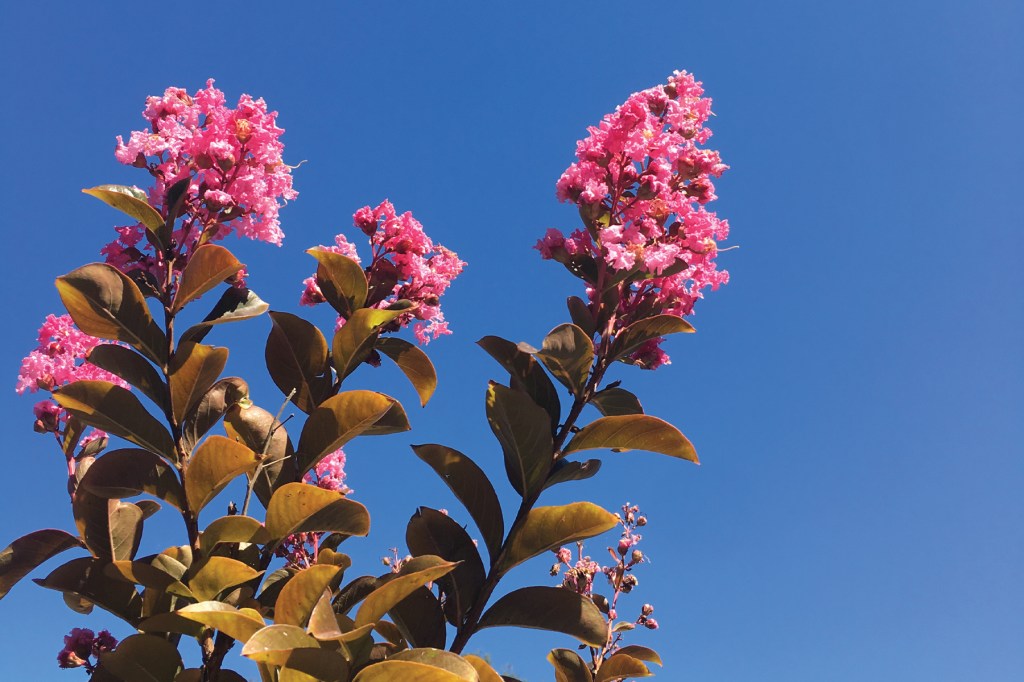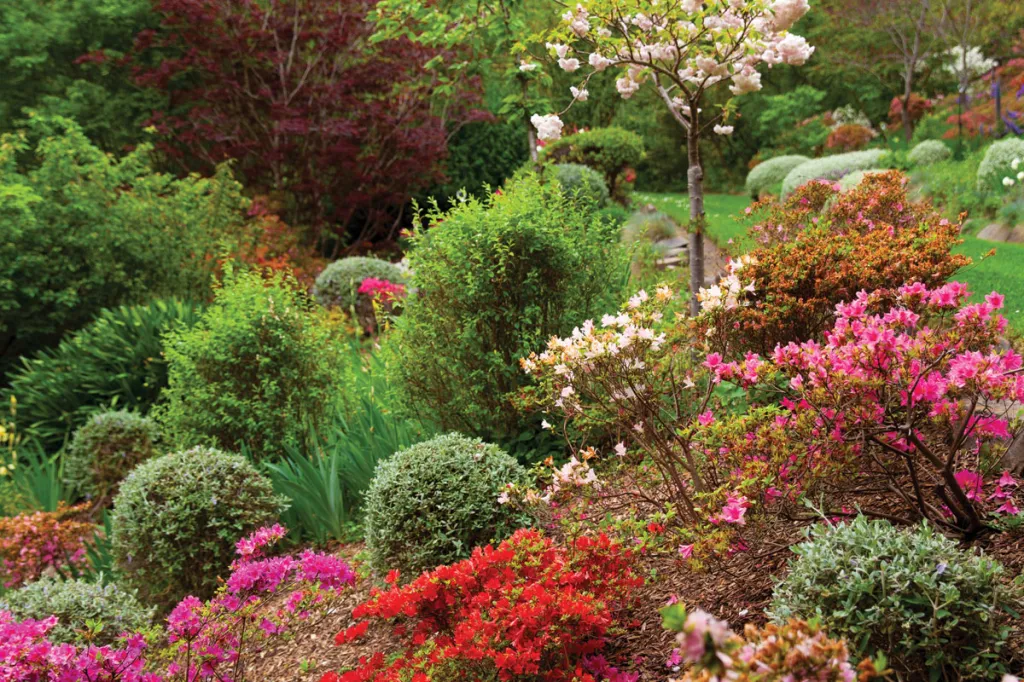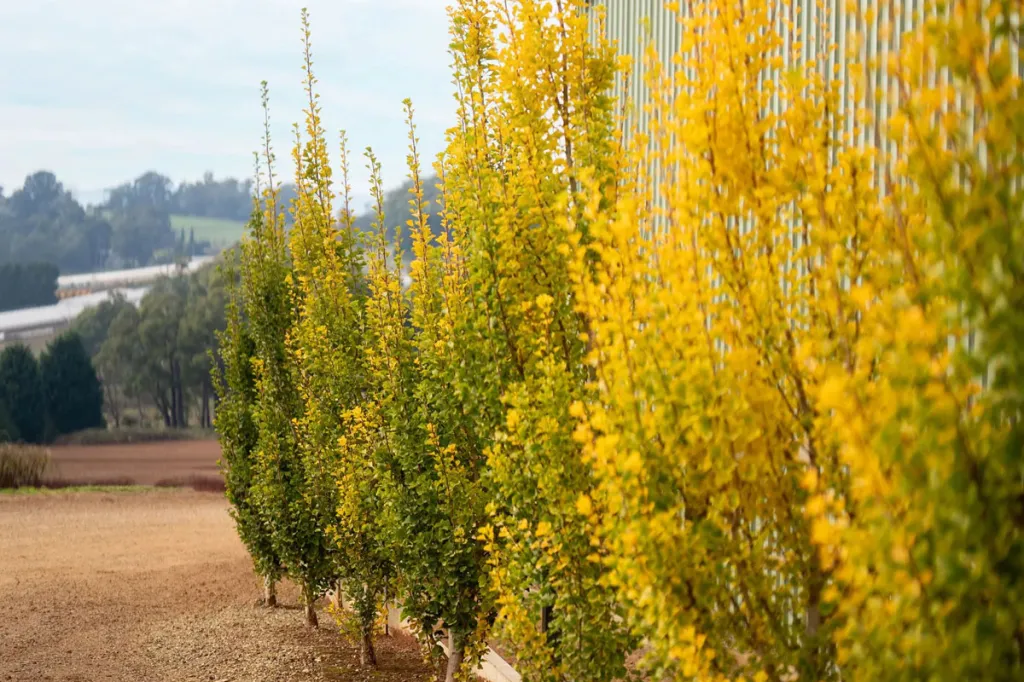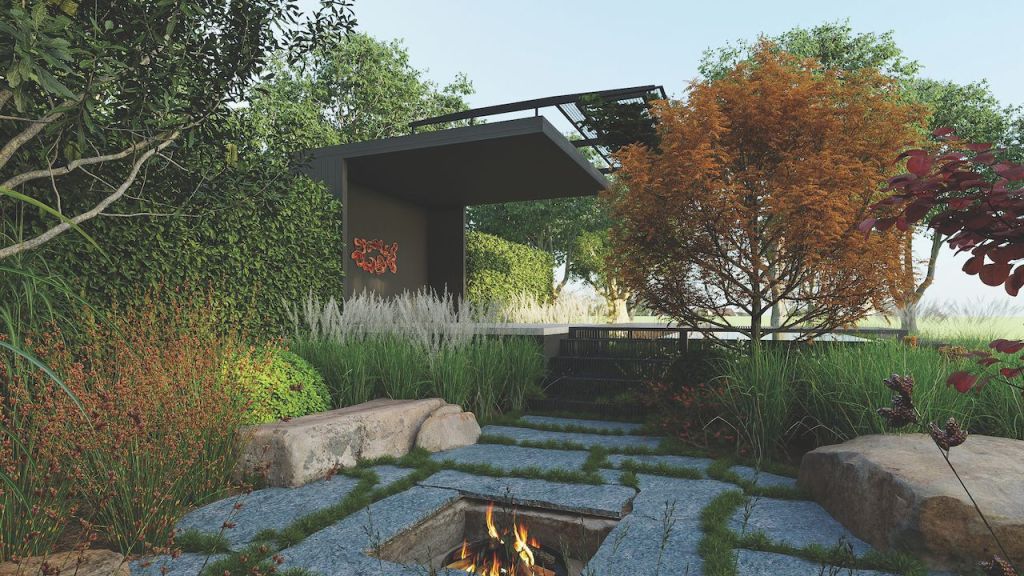The hills are alive
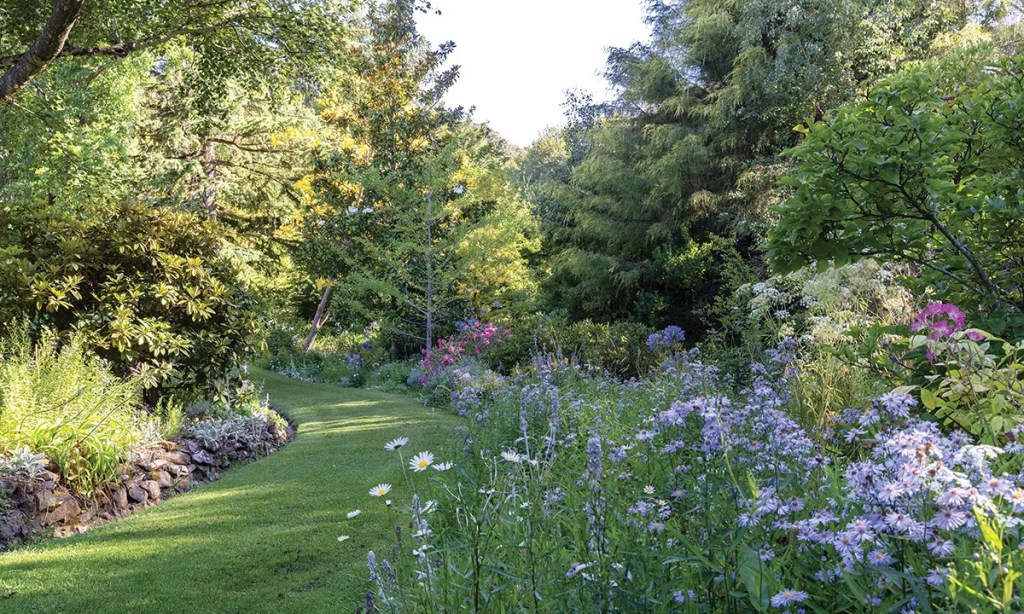
Often described as the most romantic garden in the Adelaide Hills, Stangate House is a rambling paradise where roses, hydrangeas and camellias burst into brilliant flower.
Every time Merilyn Kuchel wanders through the pebbled pathways of Aldgate garden Stangate House, she can’t help but marvel at the magnificent shade cast by one of Australia’s largest oak trees.
It’s in this very spot, where people have picnicked for generations – with its spectacular view of the more than 500 cultivars of camellia – that Merilyn can’t help but say: “I do describe Stangate House as the most romantic garden in the Adelaide Hills, because it’s very rare to have such a beautiful creek and all these lovely shaded pathways”.
Merilyn is the head gardening volunteer at Stangate House, which has been managed by the National Trust of South Australia since
the 1970s.

Great care is taken by gardening volunteers to ensure colourful borders of perennial.

Stangate was originally established in 1940 by Gwyneth Cornish and her husband Reverend Samuel Cornish, who named it after the English town where they had lived. The Cornishes were followers of William Morris’ Arts and Craft Movement and built their house in an austere World War II style, but the majestic garden with more than 750 camellias planted by the Camellia Society truly deserves its accolade of a “Camellia Garden of Excellence”.
SALIFE Gardens visited Stangate House and Garden on a January summer’s day as the garden volunteers were having their fortnightly working bee.

The hundreds of camellia trees in the garden are world-renowned.

Manicured lawns make way for over-flowing garden beds to ensure a spectacular year-round display.
As we begin our tour, Merilyn explains that hydrangeas and Asiatic lilies flourish in the garden thanks to it being much wetter than down in suburban Adelaide.
“It’s got really good soil and we’ve got underground water in sections, which can be a problem in the winter because it turns into an absolute bog, but that is food for the hydrangeas,” she says.
Merilyn and the other volunteers have also planted “old-fashioned” perennials like the Fairy Fishing Rods to recreate a traditional English garden feel in honour of the Cornishes.

Established trees give plenty of shade to the grassed areas.

Flowers including agapanthus bringing subtle hints of colour.
The garden today features trees including liquidambar, poplar, eucalypt, magnolia, Japanese maple and of course, that stunning heritage-listed English oak, with its more than six-metre girth. The under storeys include bulbs of daffodil, jonquils, hyacinths and bluebells. Other hints of the garden’s cottage influence include wisteria, rhododendron, azalea and cyclamen.
It is a riot of both colour and texture – a sensory delight for visitors.
But a challenge for the gardeners is Phytophthora, a waterborne fungus that kills the camellias and has required the removal of about a dozen plants.
“That’s a challenge, but it’s sort of good for us because we will continue to grow summer flowering plants here,” says Merilyn.

Babbling creeks help to bring a peaceful feel to the garden.

Rustic, pebbled pathways lead on throughout the garden.
Walking towards the famous oak tree, said to be the second largest in all of Australia, we cross one of Stangate’s two bridges passing over Cox Creek, which are popular spots for wedding photos.
Subscribe for updates
Merilyn tells us the large oak tree was likely planted by one of the early settlers to South Australia, although some local historians disagree.
“All the early settlers brought out seeds of all sorts of plants, you know, the fruit trees, they brought apricot stones, they brought almond kernels, they brought the olives that are planted at Beaumont House,” she says.
“When the (National) Trust historians did a bit of research, they thought it was more likely that Richard Hawkins and his wife Sarah, who opened the Aldgate Pump Hotel … may have planted the oak tree in the 1860s.

Garden benches offer moments of serenity when walking around the grounds.
“It has grown so much in the last couple of wet springs and summers … I’m very anxious that we should try and get it officially measured again.”
Also located near the oak tree is a newly installed arch, where the volunteers have planted white roses.
“We’re trying to put not a hundred per cent white, because we do have a lot of bulbs in here and there are yellow daffodils that come up in the winter, but for summer, we’re just trying to plant white flowers to create a beautiful wedding garden,” says Merilyn.
Walking back towards the house Merilyn begins to explain the relationship between the National Trust and the Camellia Society before stopping mid-sentence as she notices a blue heron and eagerly points it out.
Arriving at the verandah, SALIFE Gardens is greeted by a group of eight garden volunteers sitting around some tables enjoying their morning tea break.

Hydrangeas are among the plants that flourish in the fertile soil of Stangate House.
One of the volunteers, Di Michalk, says she started coming to Stangate House after she received a call from Merilyn, who was looking for experienced gardeners.
“To start with, it was just general weeding, then I decided to take over managing the compost bin,” she says. “This garden is always amazing. It’s big. It’s large. There’s always something in flower; you’ve got camellias in the winter and early spring, and in summer you’ve got the perennial borders looking fantastic.”
Another volunteer, Stuart Hunnisett, recently immigrated from Kent with his wife Niki, who both began volunteering as gardeners for the National Trust after a visit to Ayers House on North Terrace.
“It’s a bit of a trek to come here, it takes about an hour to get here, but it’s lovely … it’s just very warming and we do whatever needs doing,” says Stuart. “It might be up in the garden by the oak tree or it might be weeding up this top end or pruning roses.
“Where we are here, there are people from all over coming together and making friends and sharing garden experience, which is great.”
This article first appeared in the Autumn 2024 issue of SALIFE Gardens & Outdoor Living magazine.
